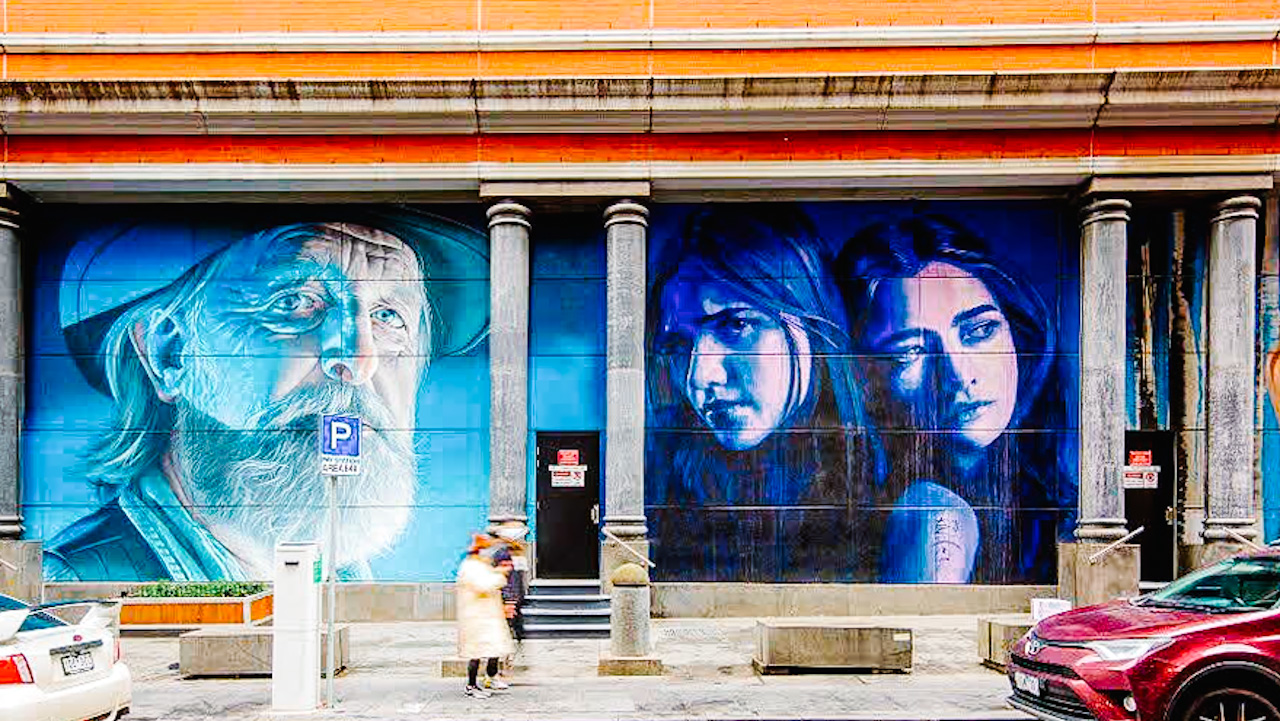Melbourne – Flash Forward Creative Laneways
The Flash Forward Creative Laneways Programme was a creative response to COVID-19, transforming Melbourne’s laneways into vibrant public spaces, supporting local artists and revitalising the city’s cultural scene.1
Case study
| City | Melbourne – 2024 Special Mention |
| Type | Public space activation and enhancement |
| Location | Central Business District |
 Flash Forward Creative Laneways © City of Melbourne
Flash Forward Creative Laneways © City of Melbourne
Key issues
Consistently recognised as one of the world’s most liveable cities, Melbourne’s greatest strength comes from its diversity. However, the city faced significant challenges when the COVID-19 pandemic hit in 2020. The creative sector, a vital contributor to the city’s economy and identity, was severely impacted. Lockdowns resulted in the cancellation of over 32,000 gigs and events, leading to a staggering AUD $94 million (approximately USD $66 million) in lost income. With 99 percent of creative professionals lacking income protection or event cancellation insurance, the need for support was urgent. Melbourne recognised the importance of revitalising the creative sector to restore the city’s vibrancy and provide opportunities for people to reconnect with each other and their city.
Objectives
The programme aimed to enhance economic wellbeing, support the local economy, and activate public places. It sought to employ at least 165 creative professionals, enhance the social, economic, and cultural qualities of 40 Melbourne laneways to draw people back to the city, improve public safety, amenity, and business participation, and enhance pedestrian connectivity.
Additionally, the programme prioritised inclusivity, engaging 14 Aboriginal Victorians, 4 creatives with a disability, and 10 percent self-identified gender diverse individuals. The project also included participants from both metropolitan Melbourne and regional Victoria.
Key strategies
The programme was a key part of Melbourne’s response to COVID-19, aiming to revive the city’s vibrancy and welcome people back through reactivation and recovery initiatives. Conceived in April 2020, the programme focused on enhancing and stimulating Melbourne’s renowned laneways through a responsive arts programme. It targeted street artists, musicians, and creative producers, many of whom may have been overlooked or underserved by current funding arrangements.
The programme highlighted a diversity of creative methods and approaches, featuring artists from a broad range of ethnic, cultural, and gender backgrounds. It also prioritised representation of Aboriginal creatives, supported by Aboriginal delivery staff, in line with the Public Art Framework. As a COVID-19 jobs-creation scheme, the programme employed over 80 creatives.
The programme delivered over 80 new creative offerings; a significant achievement given the constrained timeframe of 6-12 months. All work was undertaken on private property, relying on property owners’ goodwill and investment. Managing the independence of creative visions with property owner desires was a complexity, but the diverse and skilled delivery staff ensured that culturally complex artists’ work was well-explained and obtained property owners’ buy-in.
Impacts
The programme employed 168 creative industry professionals, delivering impressive outcomes. Over 18 months, 40 major artworks were commissioned, with 15 incorporating lighting installations to support the night-time economy. Additionally, 40 new music albums were produced, significantly elevating the profile and future opportunities for musicians. The programme invested AUD $8.9 million (approximately USD $6.23 million) into the local economy, returning a further AUD $8.9 million (approximately USD $6.23 million) in valued-added spend.
The programme significantly improved the economic wellbeing of creatives (75 percent) and production teams (166 percent). Participants reported improved physical and mental wellbeing, with creatives experiencing a 47 percent improvement and production teams a 118 percent improvement. The programme also upskilled participants, with 100 percent of creatives and 78 percent of production team members recording improved skills and knowledge. Notably, 37 percent of creatives secured new work or future possibilities, and 23 percent generated new revenue streams. All production team staff have gone on to further work, with many attributing their employability to the programme’s exposure to local government.
The programme’s success is evident in the testimonials of participants, who emphasised the value of fair pay and the importance of prioritising arts workers’ wellbeing. The programme’s focus on upskilling and employability has had a lasting impact, with participants reporting improved skills, knowledge, and future work opportunities. O
-
The information in this case study is correct as of 2023. ↩

